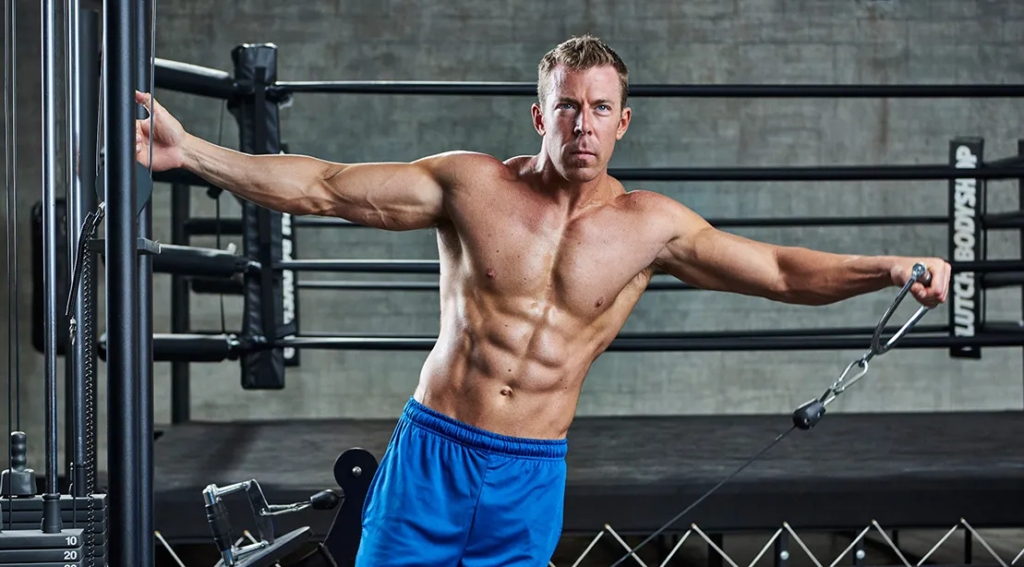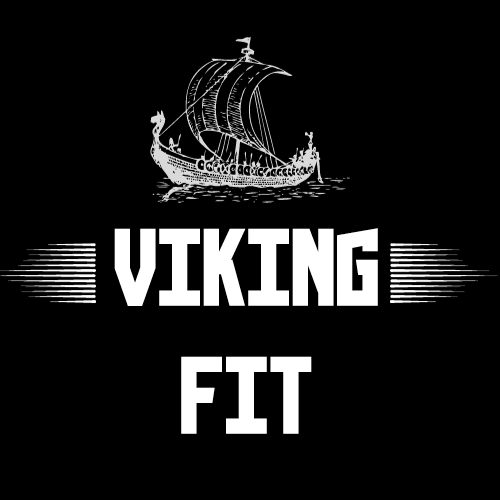Mastering Shoulder Cable Workouts: The Ultimate Guide to Building Strong Shoulders
Building strong, well-defined shoulders is a common goal for many fitness enthusiasts. Shoulder cable workouts are a highly effective way to achieve this due to the constant tension they provide, the versatility of exercises, and the ability to target specific shoulder muscles.
This comprehensive guide will delve into the benefits, anatomy, top exercises, and tips for creating an effective shoulder cable workout routine. By the end, you’ll have all the information you need to develop powerful, aesthetically pleasing shoulders.
Table of Contents
Benefits of Shoulder Cable Workouts
Constant Tension
One of the primary advantages of using cable machines for shoulder workouts is the constant tension they provide throughout the entire range of motion. Unlike free weights, where tension can vary depending on the angle and gravity, cables maintain a steady resistance, ensuring that your muscles are continually engaged. This can lead to more effective muscle activation and growth.
Versatility
Cables allow for a wide range of movements and exercises that can target different parts of the shoulder. Whether you’re aiming to hit the anterior, lateral, or posterior deltoid, cables offer the flexibility to adjust angles and positions easily. This versatility makes it possible to customize your workout to focus on specific areas that need development.
Safety
Using cables can reduce the risk of injury by providing a controlled motion. Free weights can sometimes lead to improper form or uncontrolled movements, especially when lifting heavy. Cables, on the other hand, guide your movements along a set path, helping to maintain proper form and reducing the likelihood of strains or sprains.
Essential Shoulder Anatomy
Understanding the shoulder anatomy is crucial for effectively targeting the muscles during your workouts. The main muscles involved in shoulder movements include:
Deltoids
The deltoids are the primary muscle group of the shoulder and are divided into three parts:
- Anterior Deltoid: Located at the front of the shoulder, responsible for shoulder flexion and internal rotation.
- Lateral Deltoid: Located at the side of the shoulder, responsible for shoulder abduction.
- Posterior Deltoid: Located at the back of the shoulder, responsible for shoulder extension and external rotation.
Rotator Cuff
The rotator cuff is a group of four muscles and their tendons that stabilize the shoulder joint. These muscles include:
- Supraspinatus
- Infraspinatus
- Teres Minor
- Subscapularis
The rotator cuff plays a crucial role in shoulder stability and allowing for a wide range of movements.
Trapezius
The trapezius is a large muscle that extends from the neck to the mid-back. It supports shoulder movements and helps in the elevation, retraction, and depression of the scapula.
Top Shoulder Cable Exercises
To build strong and well-defined shoulders, incorporating a variety of shoulder cable exercises into your routine is essential. Here are some of the best exercises to include:
1. Cable Shoulder Press
How to Perform:
- Attach a handle to the low pulley.
- Stand with feet shoulder-width apart and hold the handle at shoulder height.
- Press the handle upward until your arm is fully extended.
- Slowly return to the starting position.

Tips:
- Keep your core engaged to maintain balance.
- Avoid locking your elbows at the top of the movement.
- Use a controlled motion to avoid straining your shoulders.
Benefits:
- Engages the entire deltoid muscle group.
- Helps in building strength and muscle mass.
- Provides a safer alternative to free weight shoulder presses due to the controlled motion.
2. Cable Lateral Raises
How to Perform:
- Attach a single handle to the low pulley.
- Stand with your side to the machine and hold the handle with your outside hand.
- Raise your arm to the side until it’s parallel to the floor.
- Lower it back slowly.

Tips:
- Keep a slight bend in your elbow.
- Focus on lifting with your shoulder rather than your hand.
- Avoid using momentum to lift the weight.
Benefits:
- Targets the lateral deltoid, which is crucial for shoulder width.
- Enhances shoulder stability and strength.
- Improves shoulder aesthetics by developing the middle portion of the deltoid.
3. Cable Front Raises
How to Perform:
- Attach a handle to the low pulley.
- Stand facing away from the machine and hold the handle with one hand.
- Raise your arm in front of you until it’s parallel to the floor.
- Lower it back slowly.
Tips:
- Keep your back straight and avoid swinging your body.
- Use a controlled motion to engage the shoulder muscles.
- Focus on the anterior deltoid during the lift.
Benefits:
- Isolates the anterior deltoid.
- Enhances shoulder flexion strength.
- Helps in creating balanced shoulder development.

Additional Tips
Warm-Up
Always start with a warm-up to prepare your muscles and joints for the workout. Arm circles, light cardio, and dynamic stretches are good options.
Progressive Overload
Gradually increase the weight or resistance to continue challenging your muscles and promoting growth.
Proper Form
Focus on proper form to maximize muscle activation and prevent injury. Consider using a mirror or asking a trainer for feedback.
Rest and Recovery
Allow adequate rest between shoulder workouts. Muscles need time to recover and grow stronger. Typically, 48 hours of rest is recommended between intense shoulder sessions.
Do cables build more muscle?
Cables can be highly effective for muscle building due to several factors that differentiate them from free weights and other resistance training methods. While the ultimate goal of muscle building can be achieved with various types of equipment, cables offer unique benefits that can enhance muscle growth: The Ultimate Guide to Chest Cable Exercises
Are 3 shoulder exercises are enough ?
Whether three shoulder exercises are enough depends on various factors such as your fitness goals, overall workout routine, and experience level. For many people, especially beginners or those with a busy schedule, three well-chosen shoulder exercises can provide a comprehensive workout. Here are some considerations and an example routine to help you decide if three exercises are sufficient for your needs.
Considerations
Fitness Goals
- Hypertrophy (Muscle Growth): If your goal is to build muscle, focusing on compound movements and ensuring progressive overload is key. You might want to include exercises that target all parts of the deltoid (anterior, lateral, and posterior).
- Strength: For strength, you can focus on fewer, more intense exercises that allow you to lift heavier weights. The Best Testosterone Booster for Muscle Gain
- Endurance and Definition: For muscle endurance and definition, you might include higher reps and lighter weights with controlled form.
Experience Level
- Beginners: Three exercises can be a great starting point, ensuring you don’t overwhelm yourself while still hitting all major parts of the shoulder.
- Intermediate to Advanced: You may need more variation to continue making progress and avoid plateaus.
Overall Workout Routine
- Full-Body vs. Split Routines: In a full-body workout, three shoulder exercises might be more than enough. In a split routine focusing only on shoulders, you might include additional exercises.
- Frequency: If you work shoulders multiple times a week, three exercises per session could be sufficient.
Do push up work the shoulders ?
Yes, push-ups can effectively work the shoulders, along with other major muscle groups such as the chest, triceps, and core. While push-ups primarily target the pectoral muscles (chest) and triceps, the shoulders, particularly the anterior deltoids (front of the shoulders), also play a significant role in the movement. Here’s a breakdown of how push-ups benefit the shoulders and some variations that can enhance shoulder activation:
How Push-Ups Work the Shoulders
Primary Muscles Worked
- Chest (Pectoralis Major and Minor): The main muscle group targeted during push-ups.
- Triceps Brachii: The muscles at the back of your upper arms that extend the elbow.
Secondary Muscles Worked
- Anterior Deltoids: The front part of the shoulder muscles. They help with shoulder flexion and are heavily engaged during the pushing phase of the push-up.
- Core Muscles: Including the rectus abdominis, obliques, and lower back muscles, which help stabilize the body during the movement.
Common Mistakes to Avoid
To maximize the effectiveness of your shoulder cable workouts and prevent injuries, avoid these common mistakes:
Using Too Much Weight
Lifting too much weight can compromise your form and increase the risk of injury. Focus on using a weight that allows you to perform each exercise with proper form and control.
Poor Form
Improper form can lead to ineffective workouts and injuries. Always prioritize proper form over lifting heavy weights. Consider working with a trainer or using a mirror to ensure you’re performing each exercise correctly.
Neglecting Warm-Up and Cool-Down
Skipping warm-up and cool-down can increase the risk of injury and hinder recovery. Always start your workout with a proper warm-up and end with a cool-down that includes stretching and mobility exercises.
are shoulders hard to grow ?
Growing shoulder muscles can be challenging for several reasons, but with the right approach, it is definitely achievable. The complexity of shoulder anatomy, the need for balanced development, and the potential for injury all contribute to the difficulty. Here are some factors that make shoulders hard to grow and tips to overcome these challenges:
Factors That Make Shoulders Hard to Grow
1. Complex Anatomy
The shoulder is a highly complex joint with multiple muscle groups:
- Deltoids: Consist of three heads – anterior (front), lateral (side), and posterior (rear).
- Rotator Cuff: A group of four muscles that stabilize the shoulder joint.
Each of these muscles needs to be targeted with specific exercises to ensure balanced development.
2. Balanced Development
Achieving balanced shoulder development can be tricky. Overemphasis on certain exercises, like pressing movements, can lead to overdeveloped anterior deltoids and underdeveloped lateral and posterior deltoids. This imbalance can not only affect aesthetics but also lead to shoulder injuries.
3. Risk of Injury
The shoulder joint is prone to injuries due to its wide range of motion and the relatively small muscles that stabilize it. Improper form, heavy lifting, or overtraining can lead to issues like rotator cuff injuries, impingement, and tendinitis.
4. Overtraining and Recovery
Shoulders are involved in many upper body exercises, which can lead to overtraining if not managed properly. Since they are engaged in exercises for the chest, back, and even arms, giving shoulders adequate recovery time is crucial for growth.
Conclusion
Incorporating shoulder cable workouts into your fitness routine can significantly enhance your shoulder strength, stability, and definition. By understanding the benefits, essential anatomy, top exercises, and tips for creating an effective routine, you’ll be well on your way to achieving impressive shoulder gains. Remember to stay consistent, listen to your body, and adjust your workouts as needed to continue progressing.



